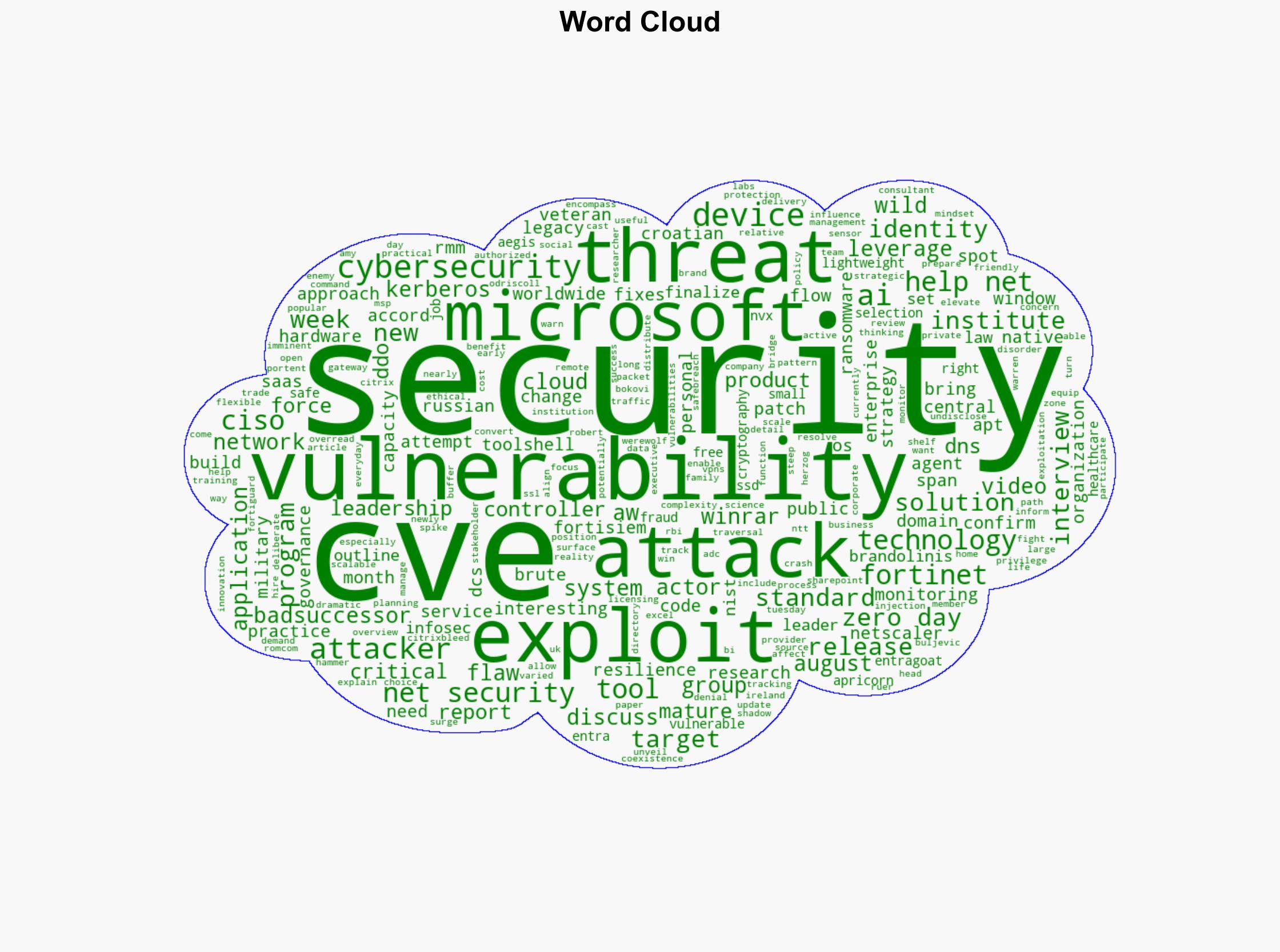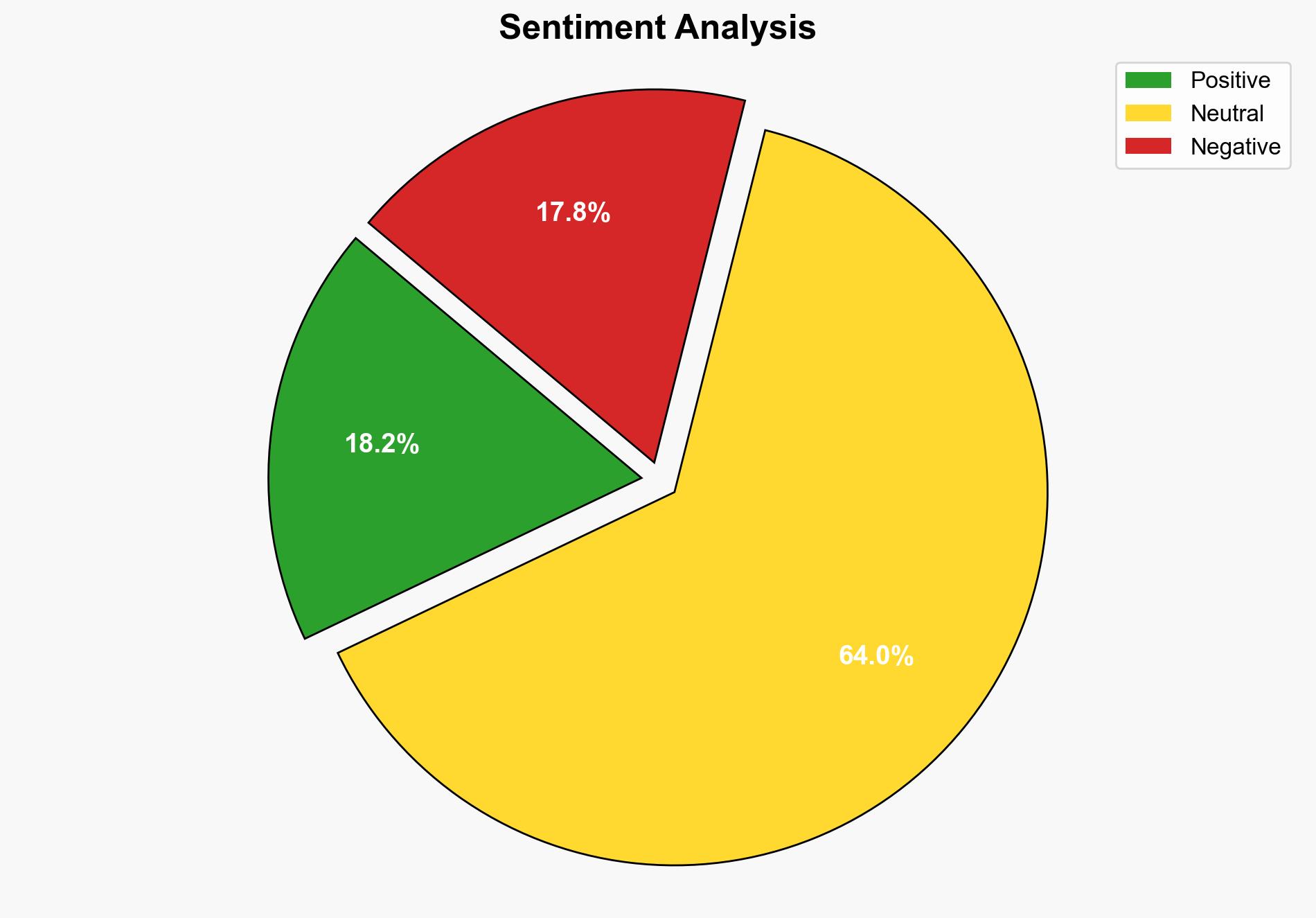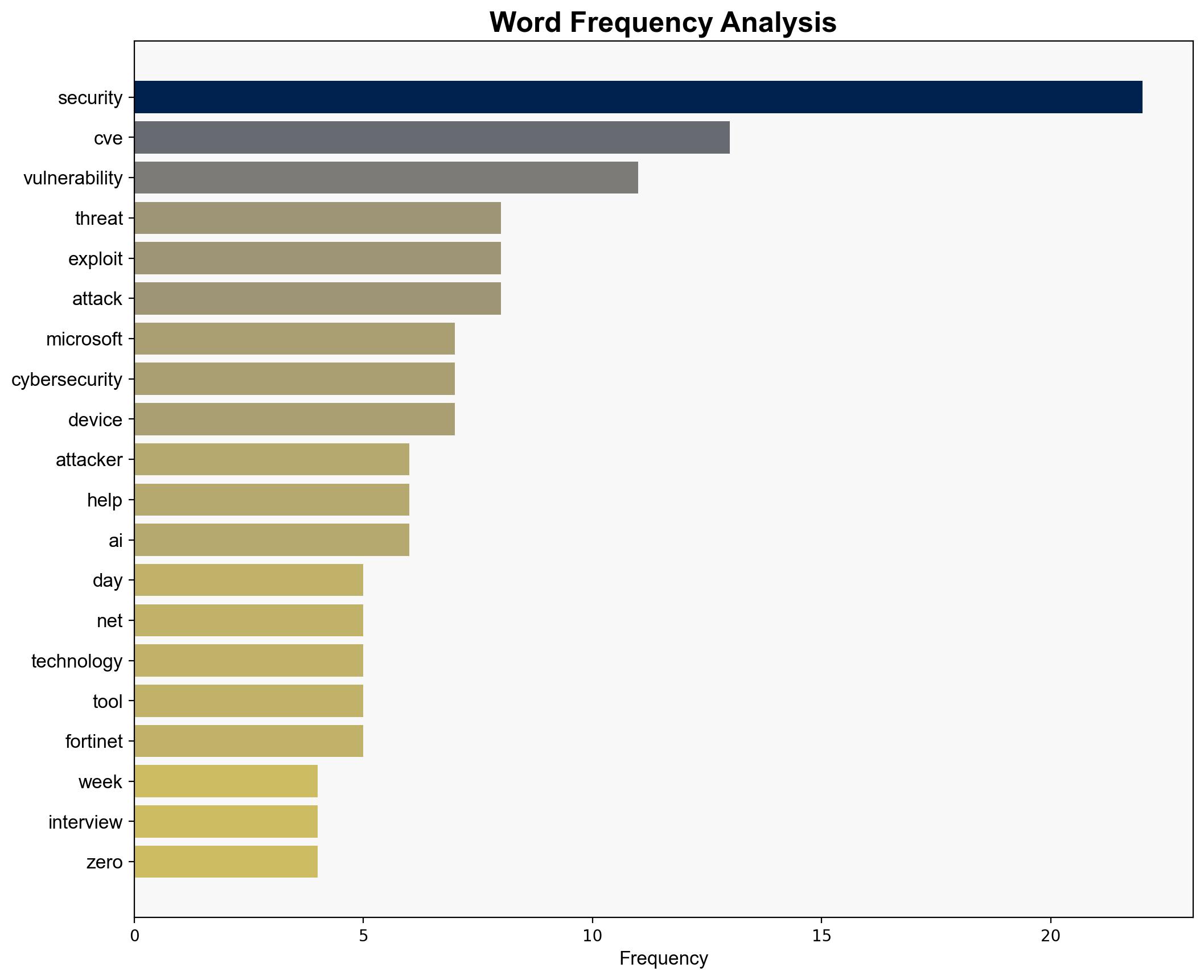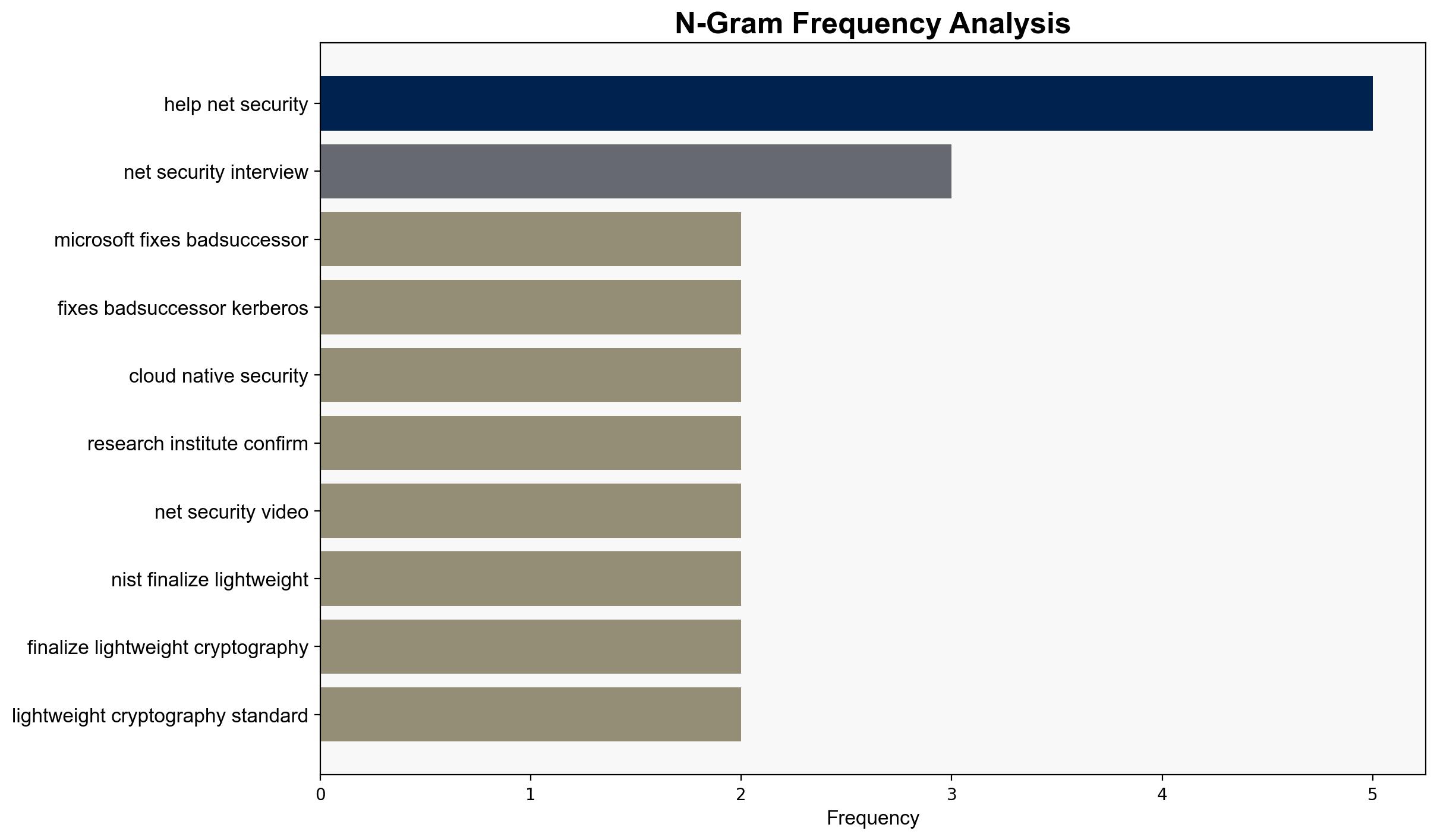Week in review 2 threat actors exploiting WinRAR 0-day Microsoft fixes BadSuccessor Kerberos flaw – Help Net Security
Published on: 2025-08-17
Intelligence Report: Week in review 2 threat actors exploiting WinRAR 0-day Microsoft fixes BadSuccessor Kerberos flaw – Help Net Security
1. BLUF (Bottom Line Up Front)
The most supported hypothesis is that threat actors are increasingly targeting vulnerabilities in widely used software, such as WinRAR and Microsoft systems, to exploit both corporate and personal networks. This trend signifies a growing sophistication and coordination among cybercriminals, posing significant risks to both enterprise and individual cybersecurity. Confidence level: High. Recommended action includes prioritizing patch management and enhancing network monitoring to detect and mitigate these threats.
2. Competing Hypotheses
1. **Hypothesis A**: Threat actors are primarily exploiting newly discovered vulnerabilities in widely used software (e.g., WinRAR, Microsoft Kerberos) to gain unauthorized access and elevate privileges within networks, focusing on both corporate and individual targets.
2. **Hypothesis B**: The increase in exploitation attempts is part of a broader strategy by state-sponsored groups to disrupt critical infrastructure and gather intelligence, using vulnerabilities as a means to infiltrate and compromise high-value targets.
Using ACH 2.0, Hypothesis A is better supported due to the immediate exploitation of known vulnerabilities and the diversity of targets, which suggests opportunistic behavior typical of cybercriminal groups rather than state-sponsored actors.
3. Key Assumptions and Red Flags
– Assumptions: It is assumed that all reported vulnerabilities are being actively exploited by threat actors. There is an assumption that the primary motivation is financial gain or data theft.
– Red Flags: Lack of specific attribution to state-sponsored actors despite the sophistication of attacks. Potential underreporting of successful breaches due to reputational concerns.
– Blind Spots: Possible underestimation of the role of insider threats or collaboration with external actors.
4. Implications and Strategic Risks
The exploitation of these vulnerabilities could lead to significant data breaches, financial losses, and erosion of trust in digital infrastructure. The cascading effect might include increased insurance premiums for cybersecurity coverage and heightened regulatory scrutiny. Geopolitically, if state-sponsored involvement is confirmed, it could escalate tensions and lead to retaliatory cyber operations.
5. Recommendations and Outlook
- Enhance patch management processes to ensure timely updates of all systems.
- Implement advanced threat detection systems to monitor for unusual network activity.
- Conduct regular cybersecurity training for employees to recognize and respond to phishing and other social engineering attacks.
- Scenario Projections:
- Best Case: Rapid patch deployment and improved monitoring prevent major breaches.
- Worst Case: Widespread exploitation leads to significant data breaches and financial losses.
- Most Likely: Continued exploitation of vulnerabilities with moderate impact on targeted organizations.
6. Key Individuals and Entities
– Amy Herzog
– Robert Buljevic
– Warren O’Driscoll
– Organizations: Microsoft, Fortinet, Citrix, Ruer Bokovi Institute
7. Thematic Tags
national security threats, cybersecurity, counter-terrorism, regional focus





